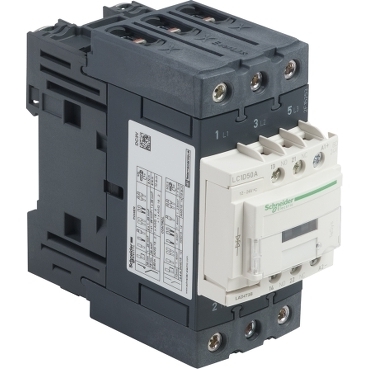
A contactor is an electrical device that is used for switching an electrical circuit on or off. It is an electromechanical control device that is used to make or break the connection between the load and power supply, and it is often considered to be a form or type of relay.
These are used in light loads, complex machine control. They are used with motors, transformers, heaters, and can be considered as an intersection point between the control circuit and power circuit because it is controlled by the control circuit, it also controls the circuit between power and loads.
What are the different types of Contactors?
- - Knife Blade Switch
- - Manual Contactor
- - Magnetic Contactor
- Knife blade Contactor: It is the first contactor used to control an electric motor in the late 1800s. It consists of a metal strip, which acts as a switch in connecting and disconnecting the connection. his is a manual contactor. And it is very difficult to fast turn ON and OFF manually. There is also a chance to wear out the contacts. It has several shortcomings which include:
- - High incidences of arcing led to a short life span for the contactor
- - Had safety risks
- - Was vulnerable to moisture and dirt
- - Double Break
Manual contactor: Since the knife blade switch became potentially dangerous to use, engineers came up with another contactor device, which offered several features that were missing in the knife blade switch. This device was referred to as a manual controller. These features include:
-   - Safe to operate
-  - Non-exposed unit, which is properly encased
- - Physically smaller size
- -  Only a single break is used
- - The switched are controlled using a contactor
The power circuit is engaged once the manual controller is activated by an operator. Once activated, it carries the electricity to the load. Soon, manual contactors replaced knife blade switches completely, and even today different variations of these types of contactors are being used.
Magnetic contactors: The design of this type of contactor is most advanced among all other types of contactors. This is an electromagnetic type contactor and it can operate automatically. It requires a small number of control circuits to turn on and off the load. Therefore, the operation of this contactor is safe compared to the manual contactor.
This is the most used contactor in industrial applications. It operates electromechanically and hence; it requires a very small amount of current to make a connection between the load and power supply.
DIFFERENCE BETWEEN CONTACTORS AND RELAYS
- - Contactors are switching devices used to control power flow to any load, while relays are switching devices used in any control circuit for checking a condition or multiplying the number of contacts available.
- - Contactors are larger when compared to relays, while relays are smaller in size
- Contactors are used in circuits with low and higher ampacity up to 12500A, while relays are used in circuits with lower ampacity. (Max 20A)
- - Contactors are used in the switching of motors, capacitors, lights, etc., while relays are mainly used in control and automation circuits, protection circuits, and for switching small electronic circuits.
- - Contactors Consists of a minimum of one set of three-phase power contacts and in some cases, additional auxiliary contacts are also provided, while relays consist of at least two NO/NC contacts
- - Contactors have in-built arc chutes for suppression, while relays do not have an arc suppression system built in.
How do Contactors work?
On de-energizing, the contactor coil gravity or spring moves
back the electro-magnetic coil to its initial position and there is no flow of
current in the circuit.
If contactors are energized with AC, a small portion
of the coil is the shaded coil, where the magnetic flux in the core is slightly
delayed. This effect is too average as it prevents the core from buzzing at
twice-line frequency. There are internal tipping point processes to ensure
rapid action so that contactors can open and close very rapidly.
From the figure the supply is given using a switch, that is when the switch is closed current flows through the contactor coil and attaches to the moving core. The contactor attached to the moving core closes and the motor starts running. When the switch is released the electromagnetic energizes spring arrangement pause the moving coil back to its initial position and the power supply to the motor is cut off.
Contactors are indispensable devices in the control of a
circuit and come with added safety features. As with every electrical device,
it is vital to ensure you find one that matches your needs and function. You
also need a reliable supplier like StockCheck. We offer genuine products meeting global
standards. Start sourcing.
-

-
-
-

-
-
 Share
Share